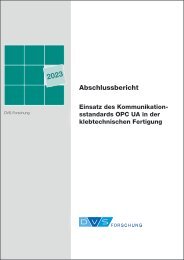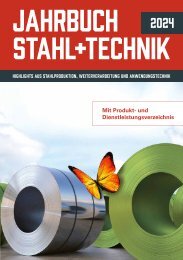You also want an ePaper? Increase the reach of your titles
YUMPU automatically turns print PDFs into web optimized ePapers that Google loves.
2.2 Preparation of APS NZSP Deposits<br />
Plasma spraying was carried out by a commercial plasma spray system (GP-80, Jiujiang, China). 430 stainless<br />
steel buttons (15 mm in diameter and 1 mm in thickness) with surface grit-blasted were used as the<br />
substrate to deposit NZSP electrolyte. The plasma jet was generated using a mixture of argon and hydrogen<br />
gases under different spray parameters, which are shown in Table 1. During plasma spraying, the plasma<br />
arc power was changed in three different levels of 32, 36 and 40 kW by altering arc current, while all other<br />
spray parameters were kept constant. To ensure splat interface bonding, the NZSP deposits were prepared<br />
at a deposition temperature of 300 °C. The isolated splats were also deposited on the polished substrate<br />
surface at the deposition temperature of 300 °C at a rapid torch traverse speed of 1000 m/s to examine the<br />
effect of spray particle size on the vaporization loss of Na and P elements. To investigate the effects of the<br />
annealing on the electrical property of NZSP deposits, they were annealed in air at 600 °C, 800 °C and<br />
1000 °C for 2 h, respectively.<br />
Table 1. Plasma spray parameters.<br />
Parameters<br />
Value<br />
Arc current (A) 550, 620, 690<br />
Arc power (kW) 32, 36, 40<br />
Primary gas (Ar) (SLPM) 45<br />
Auxiliary gas (H2) (SLPM) 4<br />
Spray distance (mm) 80<br />
Torch traverse speed (mm/s) 450<br />
2.3 Characterization of the Microstructure and Composition of the Deposits<br />
The surface morphology and cross-sectional microstructure of the powders and deposits were observed<br />
using scanning electron microscopy (SEM, MIRA 3 LMH, TESCAN, Czech). The apparent porosity and ZrO2<br />
content of the deposits were estimated by digital image analyzing method according to the ISO/TR<br />
26946:2011(E) Standard. In the cross-section images of the well-polished specimens, the pores are present<br />
in the coating in a darker contrast than other areas, while the ZrO2 phase is presented in a whiter contrast.<br />
After the binarization, the apparent porosity and ZrO2 content were obtained from the area ratios of pores<br />
and ZrO2 to the total area of specimen. The elemental compositions of the samples were analyzed by the<br />
energy dispersive spectrum (EDS). The crystal structure was characterized by X-ray diffraction (XRD, D8<br />
ADVANCE) analysis with a step rate of 2° min -1 using Cu Kα radiation source in a 2θ range of 10-60°. The<br />
profile and volume of the individual splats were measured using three-dimensional (3D) confocal laser scanning<br />
microscopy (OLS5000, OLYMPUS, Japan).<br />
2.4 Characterization of Electrochemical Performance of ASS-SIB<br />
The functional layers of ASS-SIB battery were deposited in the order of NCO, NZSP and LTO on the<br />
430 substrate using APS at a plasma arc power of 40 kW. Then, silver paste (82%, DAD-87, resistivity<br />
< 5.0×10 −4 Ω·cm) was coated on the surface of both the LTO electrode and the substrate as current collectors.<br />
The APS-sprayed battery was tested in the range of 0.5-2.5 V on the Zahner battery testing system<br />
(Zennium X). The EIS was characterized using CS350 electrochemical workstation (Solartron SI 1260/1287<br />
impedance analyzer) with an AC amplitude of 10 mV in frequency range from 0.1 Hz to 1MHz. The impedance<br />
data were fitted by the ZView software (Scribner Associates Inc). The ionic conductivity (σ) is computed<br />
using equation:<br />
σ = l / (A × R) (2-1)<br />
where l and A are the thickness of deposits and the area of silver current collector, respectively.<br />
3 Result and Discussion<br />
3.1 Effect of Spray Particle Size on the NZSP Splat Composition<br />
The NZSP splats were deposited on the polished alumina substrates with a preheating temperature of<br />
300 °C. Figure 2(a) shows the morphologies of the splats deposited at a plasma arc power of 40 kW. Most of<br />
the splats exhibited a regular disk shape since the spray particles were fully molten before impinging on the<br />
surface of substrate. A few of them exhibited a semi-molten state because of the poor heat transfer within<br />
large particles. The single isolated splat seen from Figure 2(b) showed a smooth surface without cracks,<br />
which may be attributed to the high deposition temperature which reduced the thermal mismatching stress<br />
with substrate. Only small concaves in a black contrast were distributed on the surface of splats due to the<br />
gas entrapment during spraying process.<br />
10<br />
<strong>DVS</strong> 393

















